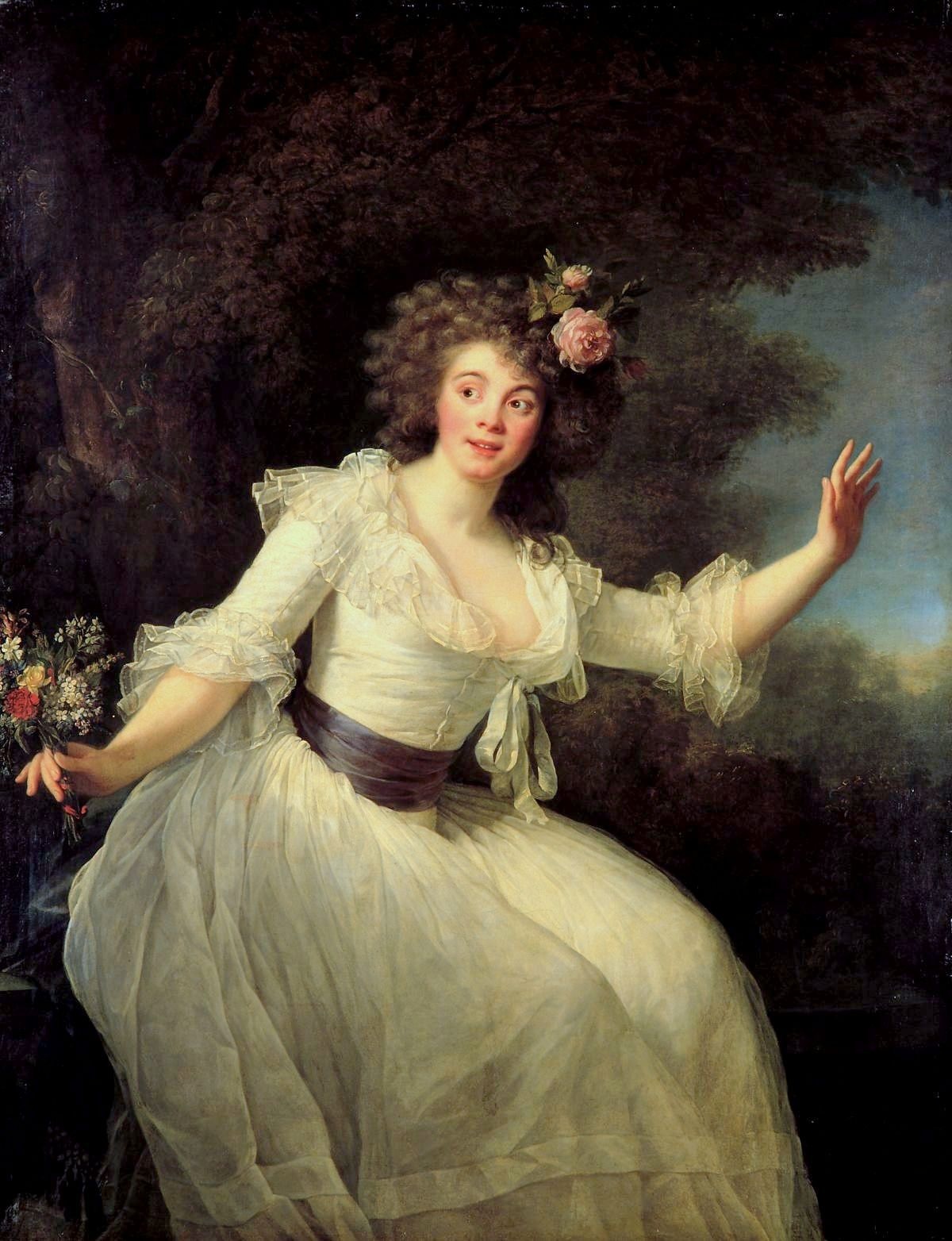Louise-Rosalie Lefebvre on:
[Wikipedia]
[Google]
[Amazon]
 Louise-Rosalie Lefebvre (18 June 1755 – 22 September 1821), also known as Madame Dugazon, was a French
Louise-Rosalie Lefebvre (18 June 1755 – 22 September 1821), also known as Madame Dugazon, was a French
 Louise-Rosalie Lefebvre (18 June 1755 – 22 September 1821), also known as Madame Dugazon, was a French
Louise-Rosalie Lefebvre (18 June 1755 – 22 September 1821), also known as Madame Dugazon, was a French opera
Opera is a form of theatre in which music is a fundamental component and dramatic roles are taken by singers. Such a "work" (the literal translation of the Italian word "opera") is typically a collaboration between a composer and a libr ...
tic mezzo-soprano, actress and dancer.
Born in Berlin as the daughter of a dancing master at the court of Frederick II of Prussia, she returned to Paris with her parents in 1765. She made her stage debut at the age of twelve as a dancer, but it was as an actress "with songs" that she made her debut at the Comédie Italienne in 1774 in Grétry's ''Sylvain''. She was at once admitted ''pensionnaire'' and in 1775 ''sociétaire''.
She became a star of the Comédie Italienne (which became the Opéra-Comique), where she created over 60 roles. She was married to the actor Jean-Henri Gourgaud
Jean-Henri Gourgaud (15 November 1746 – 19 October 1809) was a French actor under the stage name Dugazon, the son of Pierre-Antoine Gourgaud, the director of military hospitals there and also an actor.
He began his career in the provinces, ma ...
, who went by the stage name Dugazon. Together they had a child, Gustave Dugazon. The couple soon divorced, but continued to perform at the Comédie Italienne for more than twenty years.
The two kinds of parts with which she was especially identified—young mothers and women past their first youth—are still called "jeunes dugazons" and "mères dugazons" in French opera. Examples of the first are Jenny in ''La dame blanche
''La dame blanche'' ( English: ''The White Lady'') is an opéra comique in three acts by the French composer François-Adrien Boieldieu. The libretto was written by Eugène Scribe and is based on episodes from no fewer than five works of the Sc ...
'' and Berthe de Simiane in ''Les mousquetaires de la reine''; of the second, Marguerite in ''Le Pré aux clercs
''Le pré aux clercs'' (''The Clerks' Meadow'') is an opéra comique in three acts by Ferdinand Hérold with a libretto by François-Antoine-Eugène de Planard based on Prosper Mérimée's ''Chronique du temps de Charles IX'' of 1829.Pougin A. ...
'' and the queen in ''La part du diable''. The type of voice for these roles is a light mezzo-soprano or a dark-colored soprano leggero, and they are generally less demanding technically.
Roles created
*1779: Nicolette in ''Aucassin et Nicolette
''Aucassin et Nicolette'' (12th or 13th century) is an anonymous medieval French fictional story. It is the unique example of a ''chantefable'', literally, a "sung story", a combination of prose and verse (similar to a ''prosimetrum'').
History ...
'' ( Grétry)
*1784: Laurette in '' Richard Coeur-de-lion'' (Grétry)
*1786: Nina in '' Nina, Ou la folle par Amour'' (Dalayrac)
References